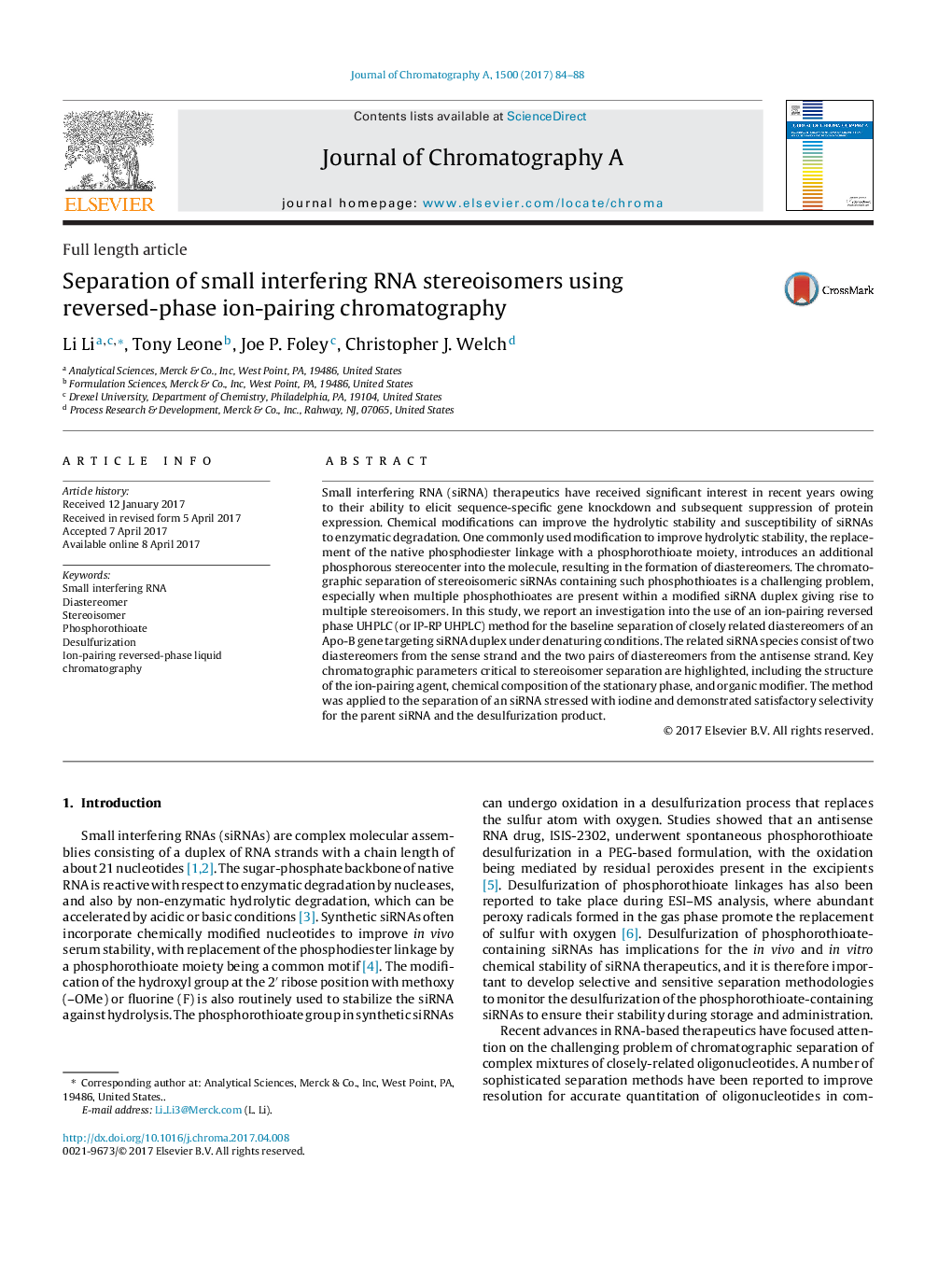| Article ID | Journal | Published Year | Pages | File Type |
|---|---|---|---|---|
| 5135377 | Journal of Chromatography A | 2017 | 5 Pages |
â¢Baseline separation of stereoisomers of a siRNA duplex was reported using UHPLC.â¢On-column dissociation of the duplex using TEAA/ACN is critical to the separation.â¢The method can resolve oxidation products of the sulfur-modified siRNA duplex.
Small interfering RNA (siRNA) therapeutics have received significant interest in recent years owing to their ability to elicit sequence-specific gene knockdown and subsequent suppression of protein expression. Chemical modifications can improve the hydrolytic stability and susceptibility of siRNAs to enzymatic degradation. One commonly used modification to improve hydrolytic stability, the replacement of the native phosphodiester linkage with a phosphorothioate moiety, introduces an additional phosphorous stereocenter into the molecule, resulting in the formation of diastereomers. The chromatographic separation of stereoisomeric siRNAs containing such phosphothioates is a challenging problem, especially when multiple phosphothioates are present within a modified siRNA duplex giving rise to multiple stereoisomers. In this study, we report an investigation into the use of an ion-pairing reversed phase UHPLC (or IP-RP UHPLC) method for the baseline separation of closely related diastereomers of an Apo-B gene targeting siRNA duplex under denaturing conditions. The related siRNA species consist of two diastereomers from the sense strand and the two pairs of diastereomers from the antisense strand. Key chromatographic parameters critical to stereoisomer separation are highlighted, including the structure of the ion-pairing agent, chemical composition of the stationary phase, and organic modifier. The method was applied to the separation of an siRNA stressed with iodine and demonstrated satisfactory selectivity for the parent siRNA and the desulfurization product.
